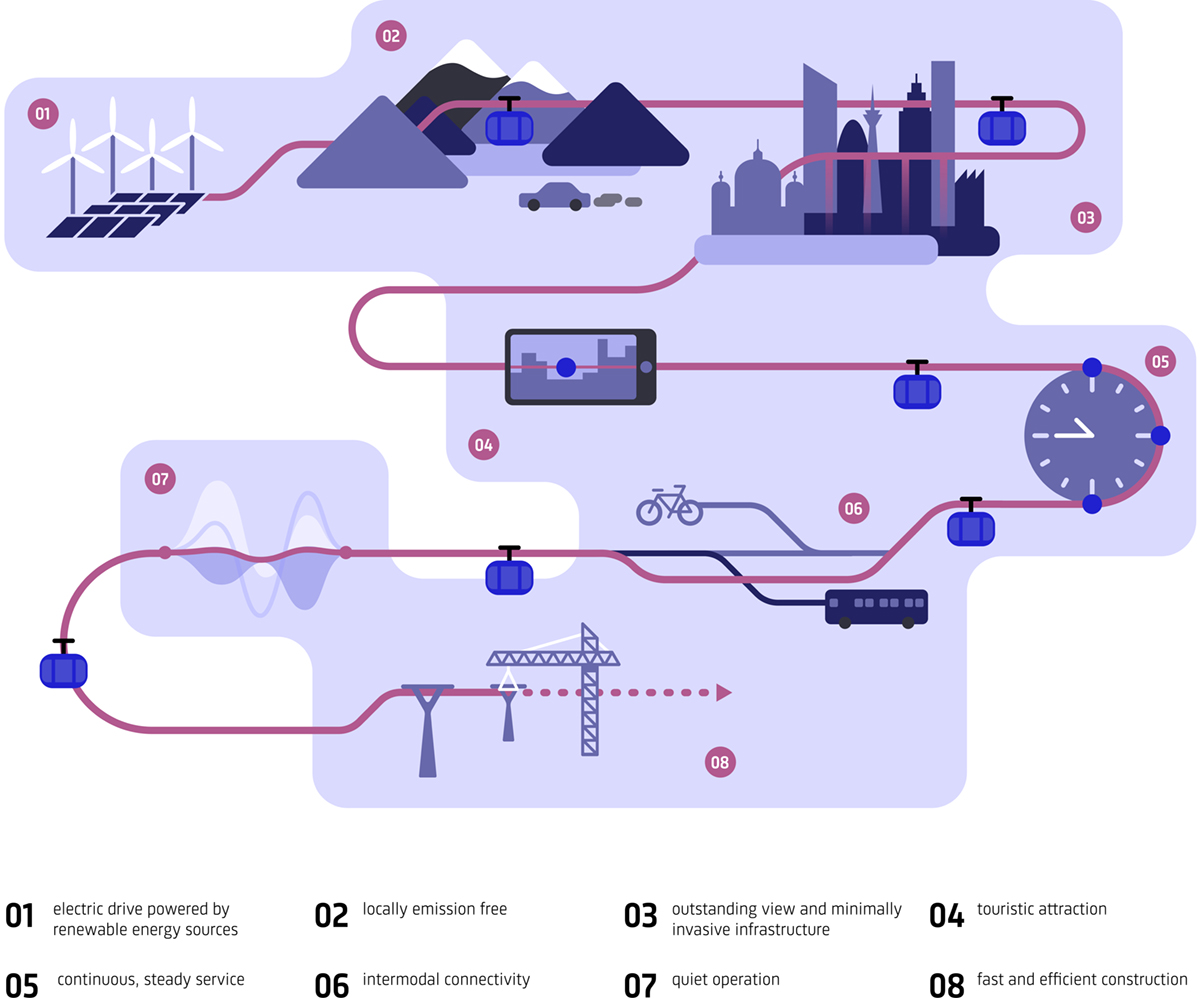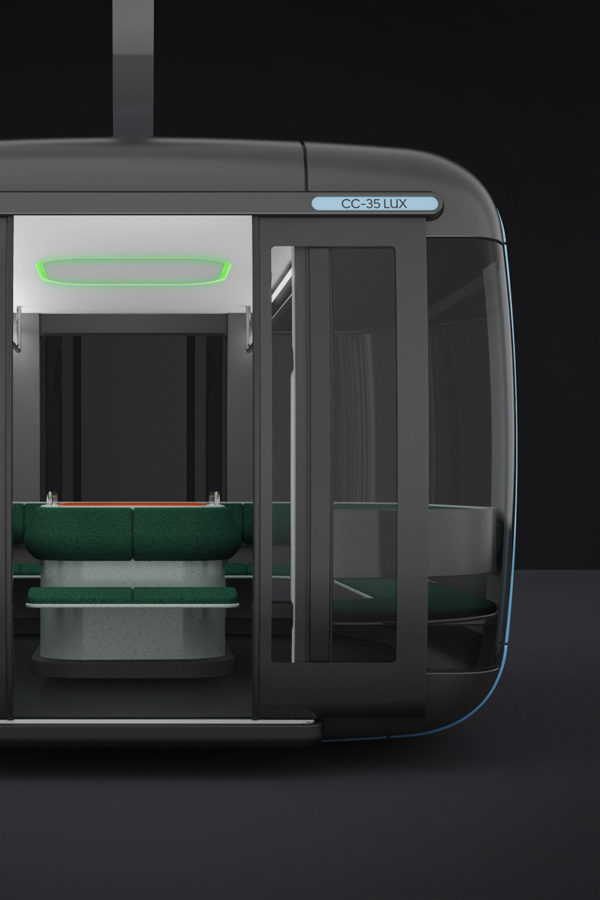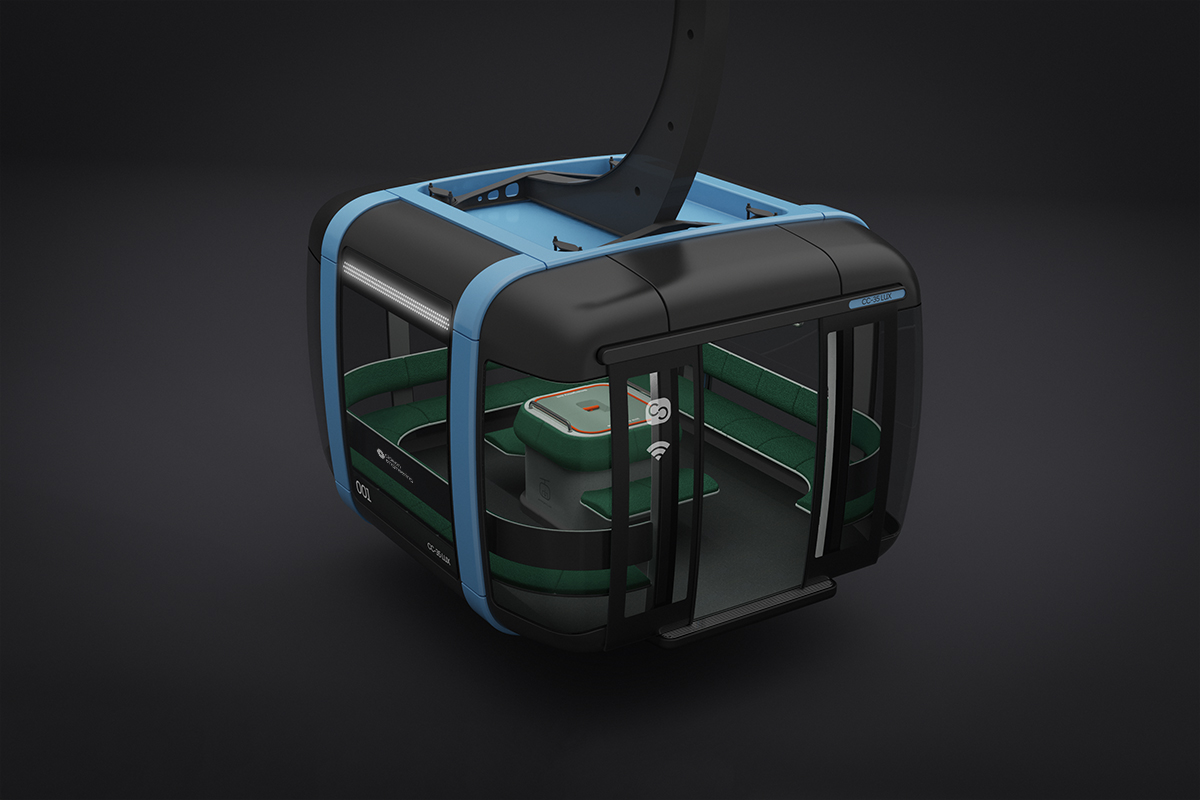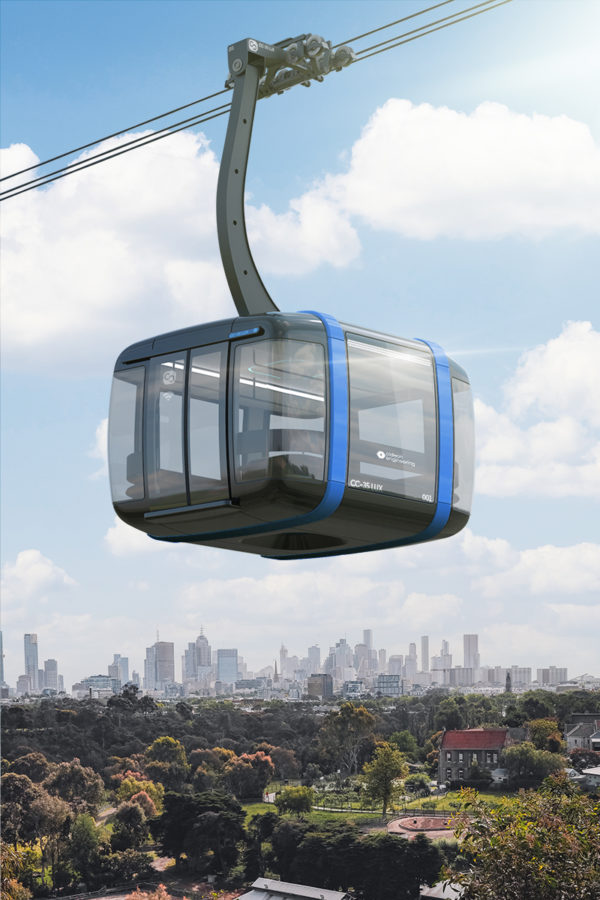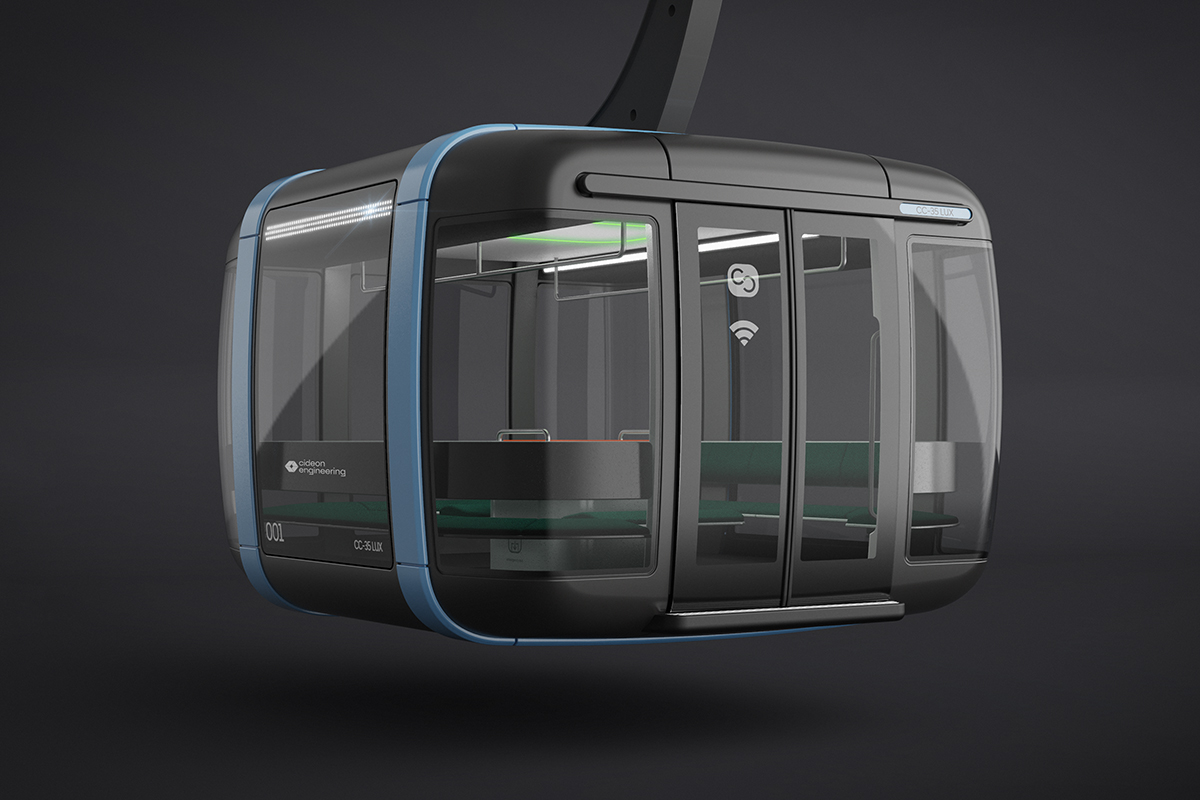
CC-35 LUX Urban Ropeway
CE Cideon Engineering GmbH & Co. KG
Urban Ropeways, also known as Aerial Tramways have been part of the mobility and urban planning discourse for quite some time. Nevertheless, realized projects that are fully integrated into the urban mobility network and implemented according to their full potential are still scarce. When thinking of ropeways, ski resorts and snow-capped mountains are still the first things that come to mind.
Together with CE Cideon Engineering GmbH & Co. KG 🡥, it was our intention to highlight the possibilities of urban ropeways for different purposes, from high-capacity cabins with a maximum load of 35 people (CC-35 LUX) to smaller units for 10 persons (CC-10 🡥).
Besides showcasing a general, adaptive concept platform, the currently discussed ropeway-line connecting Dresden’s TV tower has specifically been used as a real-world example.
The advantages and possibilities of urban ropeways are manifold. First of all, ropeways can increase the traffic capacity with minimally invasive infrastructure and very short construction times. Its ability to effortlessly overcome topological obstacles such as hills or rivers is inherent to its elevated operation. Passengers can enjoy outstanding views while gliding above the city on an exclusive track, free of traffic jams or collisions. The steady and continuous operation of the ropeway leads to a high frequency of transport, making it obsolete for passengers to rush to the station; ropeways are nearly impossible to have just missed. Modern ropeways are one of the safest means of transport and can be further enhanced with existing technologies such as evacuation chutes.
Due to being a centralized system with one single electric drive, the ropeway can be locally emission free and is comparatively quiet. This makes it ideal for crossing over protected wildlife reserves or other sensitive areas.
However, the great potential of urban ropeways remains untapped if they are used as stand-alone solutions. Instead ropeways are ideal for closing the gaps on the network tangents and enabling intermodal connections for previously blind spots in the network.
As with most new transport applications, it is understandable that the public tends to rely on the known and existing. However, one key potential of design is to push the boundaries of the familiar and to bring an alternative future into tangible reach. Any concerns the public may have about this system can at least be addressed with design and user-oriented solutions. Ideally, this leads to the ropeway being perceived as a landmark and tourist attraction according to its unique qualities and comfort.
Together with CE Cideon Engineering GmbH & Co. KG 🡥, it was our intention to highlight the possibilities of urban ropeways for different purposes, from high-capacity cabins with a maximum load of 35 people (CC-35 LUX) to smaller units for 10 persons (CC-10 🡥).
Besides showcasing a general, adaptive concept platform, the currently discussed ropeway-line connecting Dresden’s TV tower has specifically been used as a real-world example.
The advantages and possibilities of urban ropeways are manifold. First of all, ropeways can increase the traffic capacity with minimally invasive infrastructure and very short construction times. Its ability to effortlessly overcome topological obstacles such as hills or rivers is inherent to its elevated operation. Passengers can enjoy outstanding views while gliding above the city on an exclusive track, free of traffic jams or collisions. The steady and continuous operation of the ropeway leads to a high frequency of transport, making it obsolete for passengers to rush to the station; ropeways are nearly impossible to have just missed. Modern ropeways are one of the safest means of transport and can be further enhanced with existing technologies such as evacuation chutes.
Due to being a centralized system with one single electric drive, the ropeway can be locally emission free and is comparatively quiet. This makes it ideal for crossing over protected wildlife reserves or other sensitive areas.
However, the great potential of urban ropeways remains untapped if they are used as stand-alone solutions. Instead ropeways are ideal for closing the gaps on the network tangents and enabling intermodal connections for previously blind spots in the network.
As with most new transport applications, it is understandable that the public tends to rely on the known and existing. However, one key potential of design is to push the boundaries of the familiar and to bring an alternative future into tangible reach. Any concerns the public may have about this system can at least be addressed with design and user-oriented solutions. Ideally, this leads to the ropeway being perceived as a landmark and tourist attraction according to its unique qualities and comfort.
